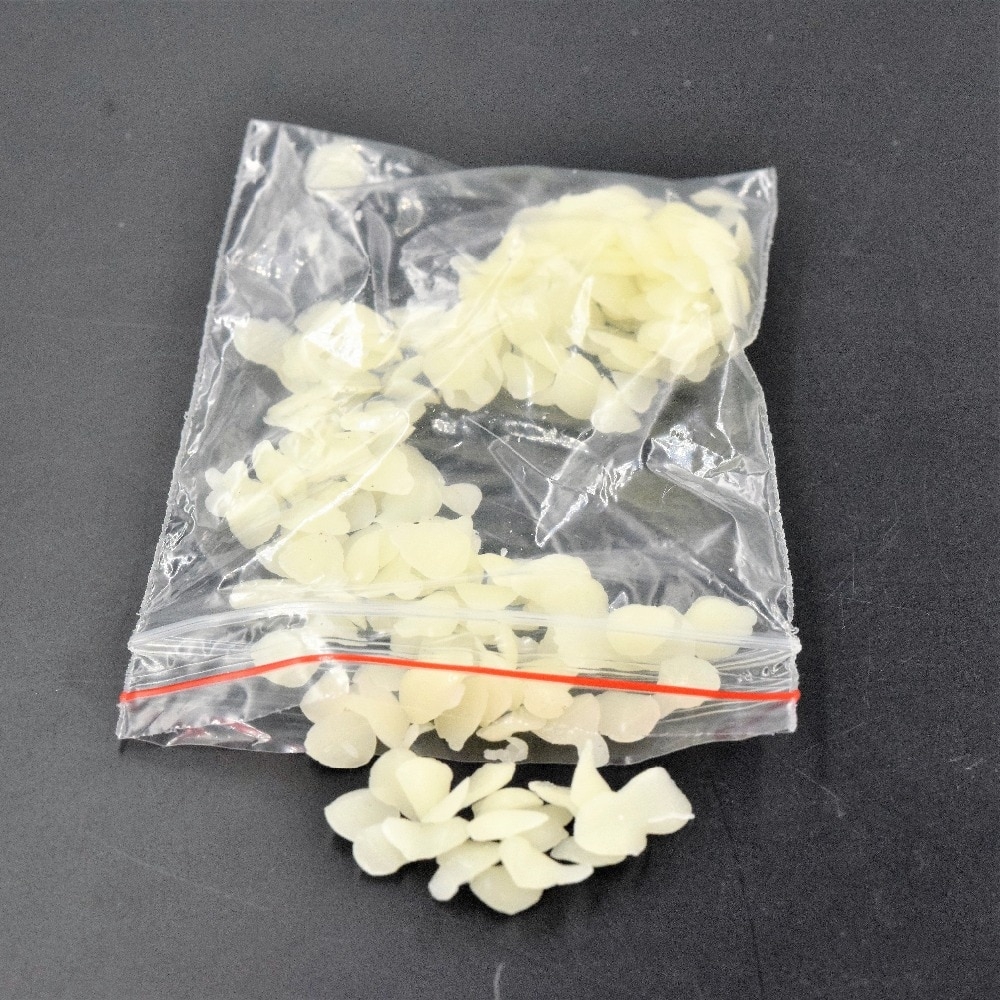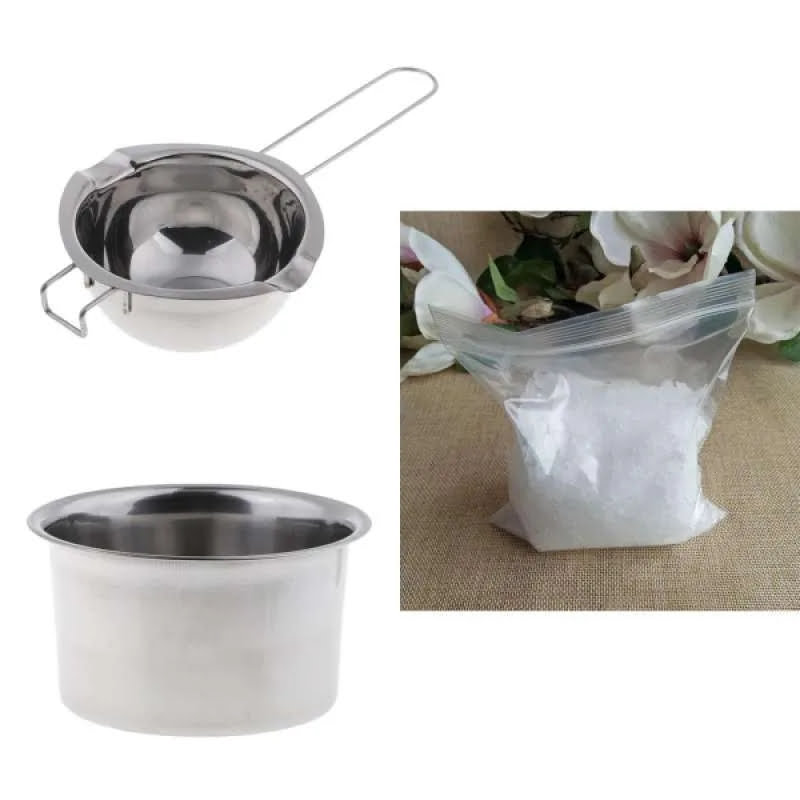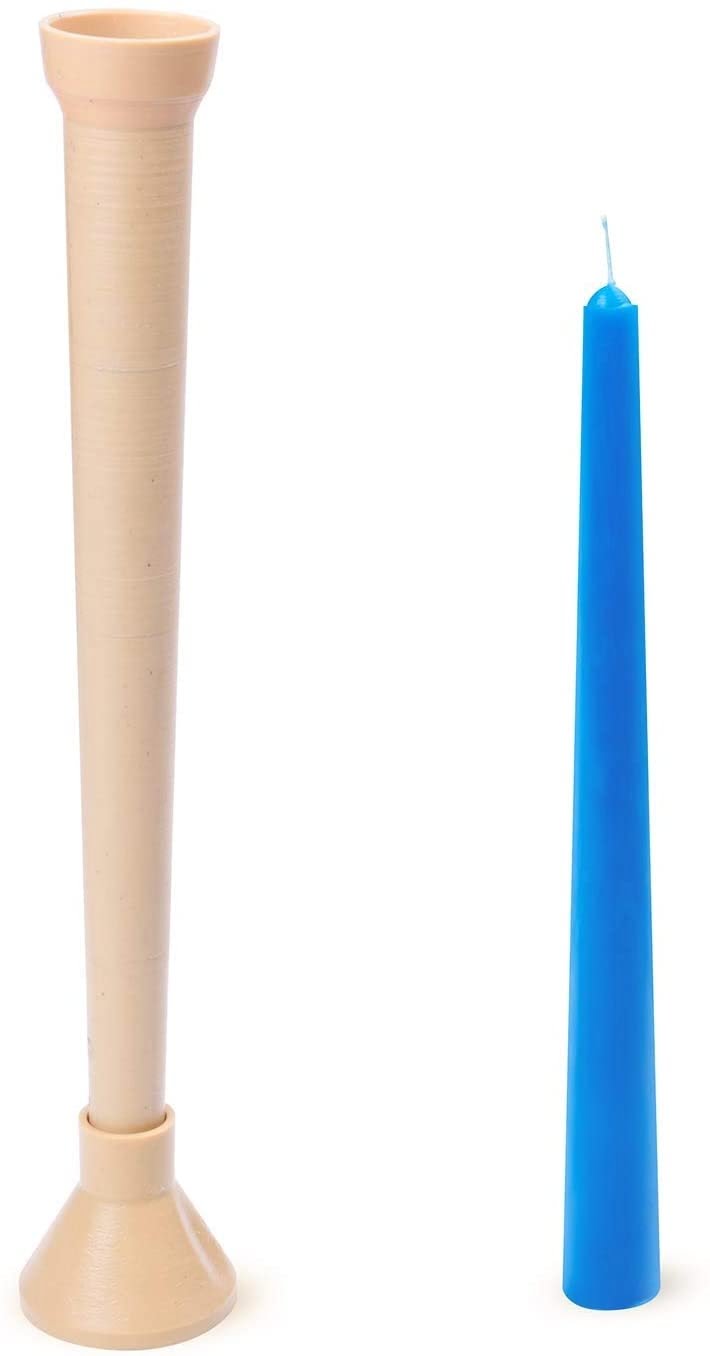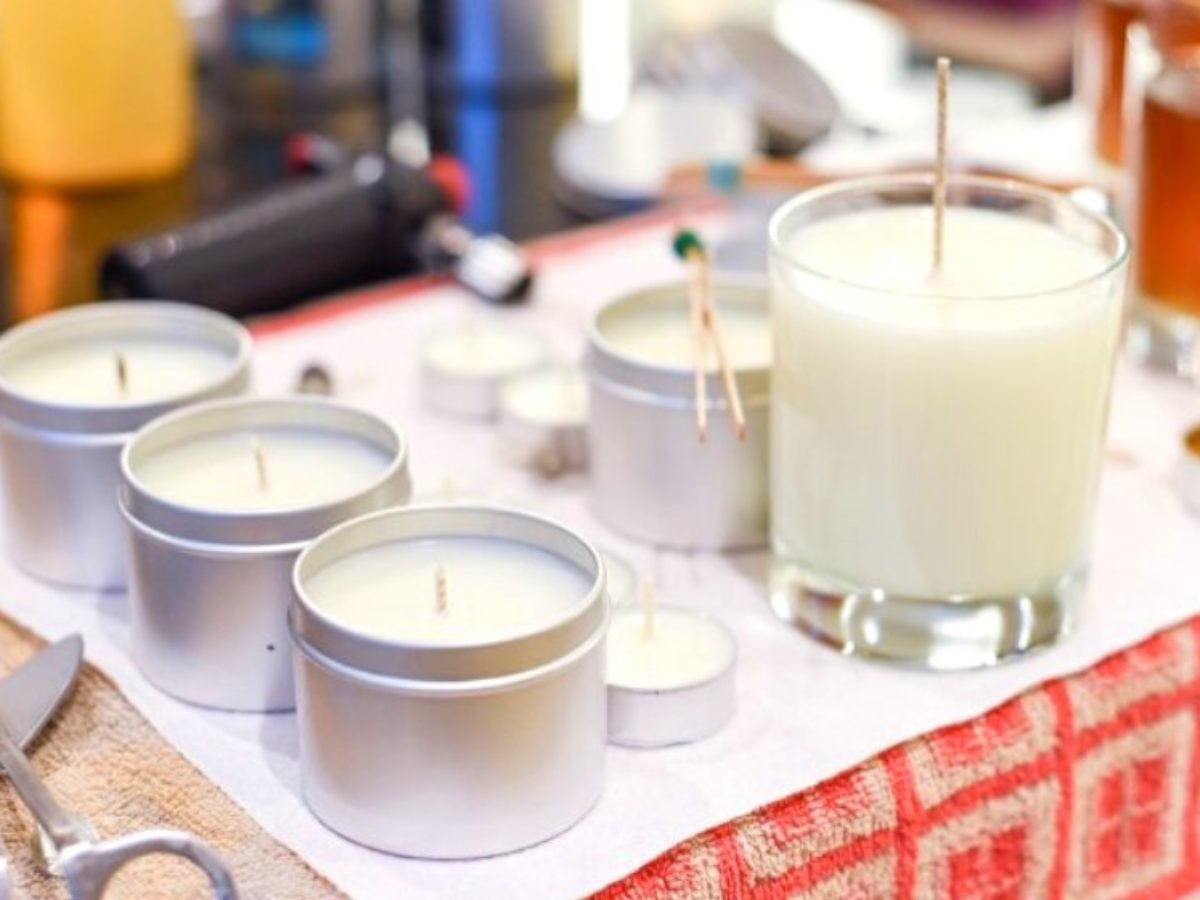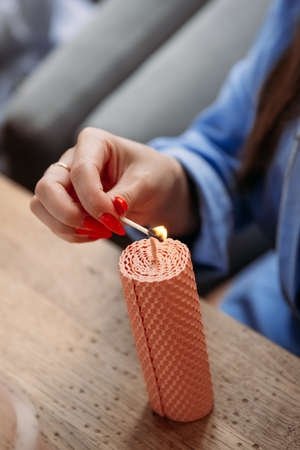When it comes to creating the perfect soy candles, one of the most crucial factors to consider is choosing the right wick. The stiffness of the wick plays a significant role in ensuring an even burn and optimal scent throw for your candles. In this article, we will delve into the importance of selecting the stiffest wick for soy candle making and how it can make a difference in the quality of your finished products.
Soy wax, known for its clean-burning properties and eco-friendly nature, has gained popularity among candle makers. Understanding the characteristics of soy wax is essential when selecting a wick that complements its unique qualities. Unlike other types of wax, soy wax requires a specific type of wick to achieve the desired results in terms of burn time and fragrance diffusion.
Choosing the right wick size for your soy candles can determine their overall performance. Factors such as diameter, stiffness, and material composition all play a role in how effectively the wick burns throughout the candle’s lifespan. In the following sections, we will explore different types of wicks available on the market and provide insights on why selecting the stiffest option is crucial for successful soy candle making.
Understanding the Characteristics of Soy Wax
Soy wax has become a popular choice among candle makers due to its numerous benefits and unique characteristics. Unlike paraffin wax, which is derived from petroleum, soy wax is made from soybean oil, a renewable resource. This makes it a more eco-friendly option for those looking to reduce their carbon footprint and support sustainable practices in candle making. Additionally, soy wax burns cleaner than paraffin wax, producing less soot and toxins when lit.
One of the key benefits of using soy wax for candle making is its improved scent throw. Soy wax has a lower melting point than other waxes, allowing it to hold onto fragrance oils better and release them consistently as the candle burns.
This results in a stronger and more aromatic scent that can quickly fill a room without overwhelming the senses. In addition, soy wax has a longer burn time compared to paraffin wax, making it cost-effective in the long run.
When working with soy wax, it is crucial to understand its specific characteristics to ensure successful candle making. Soy wax has a softer consistency than other waxes, which means it requires a wick that can provide enough rigidity to maintain an even burn pool.
Choosing the stiffest wick for soy candle making is essential to prevent issues such as tunneling or poor scent throw. By selecting the right wick size and stiffness level based on your container size and desired fragrance intensity, you can create high-quality soy candles that burn evenly and emit a beautiful aroma throughout their lifespan.
| Benefits of Soy Wax | Characteristics of Soy Wax |
|---|---|
| Renewable resource | Lower melting point |
| Cleaner burning | Softer consistency |
| Improved scent throw | Requires stiff wicks for even burning |
Factors to Consider When Choosing a Wick
When it comes to creating the perfect soy candles, choosing the right wick is essential. A crucial factor to consider when selecting a wick for your soy candles is the size.
The size of the wick plays a significant role in how your candle burns, as it determines how much wax is melted and pulled up the wick to fuel the flame. Using the correct wick size for your soy candles will help achieve an even burn, minimize issues like tunneling or mushrooming, and optimize scent throw.
Understanding Wick Sizes
Wicks come in different diameters to accommodate various candle sizes and compositions. The general rule of thumb when selecting a wick size for soy candles is that larger candles require thicker wicks, while smaller candles need thinner ones.
It’s crucial to match the wick’s diameter with the diameter of your candle vessel to ensure proper burning. Choosing a wick that is too small can result in tunneling, where only a small hole forms in the center of the candle, while a wick that is too large may cause excessive sooting or mushrooming.
Conducting Wick Tests
To determine the appropriate wick size for your soy candles, conducting wick tests is highly recommended. Wick testing involves burning different wick sizes in sample candles to observe how they perform. Start by testing various sizes within the recommended range for your candle diameter. Monitor factors such as burn pool size, flame height, soot production, and overall performance. Through these tests, you can pinpoint which wick provides the optimal burn for your specific soy wax blend and container size.
Exploring the Different Types of Wicks Available
Soy candle making offers a unique and environmentally friendly option for creating beautifully scented candles. When it comes to choosing the right wick for your soy candles, there are several factors to consider, including the type of wick material. Different wick materials can impact the burn time, scent throw, and overall performance of your soy candles.
Cotton Wicks
Cotton wicks are a popular choice for soy candle making due to their clean burn and minimal soot production. They are known for their consistent flame size and reliable performance. Cotton wicks come in various sizes, making it easy to find the perfect match for different container sizes and shapes. For those looking for a versatile and reliable option, cotton wicks are a great go-to choice.
Wooden Wicks
Wooden wicks have gained popularity in recent years for their aesthetic appeal and crackling sound when burning. These wicks can add a cozy and rustic element to your soy candles. However, wooden wicks may require a longer burn time initially to establish a full melt pool compared to traditional cotton wicks. It’s essential to consider the size of the wooden wick in relation to your candle container dimensions to ensure optimal performance.
Other Wick Materials
In addition to cotton and wood, there are other wick materials available for soy candle making, such as hemp or paper core wicks. Each type of material has its unique characteristics that can affect how the candle burns. Some may produce larger flames or burn more quickly than others. It’s essential to experiment with different types of wick materials to determine which one works best with your soy wax blend and fragrance oils.
Choosing the right wick material is crucial when creating soy candles that burn evenly and emit a strong scent throw. By understanding the characteristics of cotton, wood, and other materials used in wicks, you can make an informed decision on which type will work best for your specific candle-making needs. Remember that finding the stiffest wick for soy candle making is essential for achieving optimal results in your homemade creations.
The Importance of Wick Stiffness
When it comes to making soy candles, choosing the right wick is essential for achieving an even burn and optimal scent throw. One of the key factors to consider when selecting a wick is its stiffness. The stiffness of the wick plays a crucial role in how the candle burns and disperses fragrance throughout a space. Using the stiffest wick for soy candle making can make a significant difference in the quality of your final product.
Soy wax has unique characteristics that set it apart from other types of wax. It burns cleaner and slower, allowing for a longer-lasting candle compared to paraffin wax. However, soy wax can be softer than paraffin, requiring a stiffer wick to support its structure during burning. The choice of wick stiffness is particularly important when working with soy wax to ensure a steady flame and even melt pool formation.
Different types of wicks are available for soy candle making, including cotton, wood, and others. Each type has varying levels of stiffness that can affect how the candle burns. For soy candles, selecting a wick with the appropriate stiffness based on factors like diameter and composition is crucial for achieving consistent burn performance and fragrance diffusion. Testing different wick options will help determine which one provides the best results for your specific soy candle-making needs.
| Characteristics of Soy Wax | Importance |
|---|---|
| Burns cleaner and slower than paraffin wax | Provides longer-lasting candles |
| Requires stiffer wicks for support | Ensures steady flame and even melt pool formation |
Testing the Stiffest Wick for Soy Candle Making
When it comes to creating high-quality soy candles, selecting the right wick is essential for achieving an even burn and optimal scent throw. One crucial factor to consider when choosing a wick is its stiffness.
The stiffness of the wick plays a significant role in how the candle burns and disperses fragrance throughout the room. To ensure that you are using the stiffest wick for soy candle making, it is important to conduct wick tests to determine the best option for your specific candles.
To begin testing the stiffest wick for your soy candles, you will need to gather a few essential materials: different wick sizes, soy wax, fragrance oil, containers for candle-making, a thermometer, and a stirring utensil. Once you have all your materials ready, follow these simple steps:
- Prepare your soy wax by melting it down to the appropriate temperature according to the manufacturer’s instructions.
- Add your chosen fragrance oil to the melted soy wax and stir gently to ensure it is thoroughly mixed.
- Pour the scented wax into multiple containers with different wicks sizes inserted and secured in place.
- Allow the candles to cool and harden completely before lighting them one at a time to observe how they burn.
During the burning process, pay close attention to how each candle performs. Look for signs of tunneling or mushrooming, which can indicate that the wick may be too soft or too stiff. Additionally, take note of how well each candle throws its scent into the room. By conducting these tests and comparing the results, you can select the stiffest wick that provides an even burn and optimal fragrance dispersion for your soy candles.
Testing different wicks and finding the stiffest option for your soy candle making process may require some trial and error. It is essential not to rush this step as choosing the right wick can make a significant difference in the quality of your final product.
By following this step-by-step guide on conducting wick tests, you can confidently create beautiful soy candles with excellent burning characteristics and captivating scents that will delight your customers or bring warmth to your home environment.
Troubleshooting Common Wick-Related Issues
When it comes to making soy candles, choosing the right wick is crucial for a successful burn and optimal scent throw. However, even with the correct wick selection, issues can still arise during the candle-making process. Common problems such as tunneling, mushrooming, and poor scent throw can affect the quality of your soy candles. By understanding these issues and knowing how to troubleshoot them, you can achieve the desired results in your candle-making endeavors.
To address tunneling, which refers to uneven melting that creates a hole down the center of the candle, consider using a larger wick size or trimming the wick before each use. This will help ensure that the entire surface of the candle melts evenly, preventing tunneling from occurring. Additionally, placing your soy candles in containers with a wider diameter can also help promote an even burn and prevent tunneling.
Another common issue in candle making is mushrooming, where carbon deposits accumulate at the tip of the wick and create a dark “mushroom” shape when burned. To reduce mushrooming, trim your wick to 1/4 inch before lighting it each time. This will help control the size of the flame and minimize carbon buildup on the wick. Choosing a natural fiber wick like cotton can also help reduce mushrooming and improve the overall burning experience of your soy candles.
Poor scent throw is another challenge that candle makers may encounter when using soy wax. This occurs when the fragrance in the candle does not disperse effectively into the air when burned.
To enhance scent throw, try using a higher fragrance load or opting for a wick that produces a hotter burn temperature. The proper combination of fragrance oils and wicks can significantly impact the scent strength and distribution of your soy candles, ensuring that they fill your space with beautiful aromas every time you light them up.
Conclusion
In conclusion, selecting the right wick for soy candle making is crucial to ensure a successful outcome in terms of burn quality and fragrance diffusion. As we have explored throughout this article, the stiffness of the wick plays a significant role in achieving an even burn and optimal scent throw. Choosing the stiffest wick that is suitable for your soy candles can make a significant difference in the overall performance of your creations.
When it comes to soy wax, its unique characteristics set it apart from other types of wax, making it essential to carefully consider the type of wick used. Factors such as size, material, and stiffness all contribute to the effectiveness of the wick in delivering a consistent burn and releasing fragrance evenly. By understanding these key elements and conducting thorough wick tests, you can determine which option is the best fit for your specific soy candle-making needs.
In essence, by prioritizing the selection of the stiffest wick for soy candle making, you are setting yourself up for success in creating high-quality candles that not only burn evenly but also fill your space with delightful scents. Remember to pay attention to details such as wick size and stiffness, conduct testing to find the perfect match for your candles, and troubleshoot any issues that may arise along the way.
With these considerations in mind, you can elevate your soy candle-making experience and enjoy beautiful results every time.
Frequently Asked Questions
What Is the Best Wick to Use for Soy Candles?
The best wick to use for soy candles depends on various factors such as the diameter of the candle, fragrance load, and colorants used. Generally, cotton or paper core wicks are popular choices for soy candles due to their clean burn and minimal soot production.
How Do You Stiffen a Candle Wick?
To stiffen a candle wick, you can try dipping it in molten wax and allowing it to cool and harden. This process can help strengthen the wick and prevent it from bending or sagging while burning, ensuring a more consistent flame.
What Are the Best Wicks for American Soy Wax?
When choosing the best wicks for American soy wax candles, it’s important to consider the specific characteristics of the wax itself. Wicks made from cotton or wood are often recommended for American soy wax due to their ability to burn cleanly and evenly within this type of formulation.
Conducting test burns with different wick sizes can help determine the optimal choice for your specific candle-making project.

Welcome to my candle making blog! In this blog, I will be sharing my tips and tricks for making candles. I will also be sharing some of my favorite recipes.

